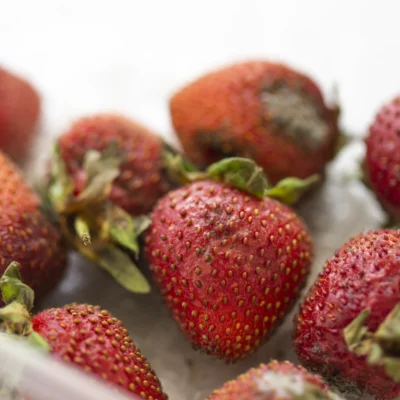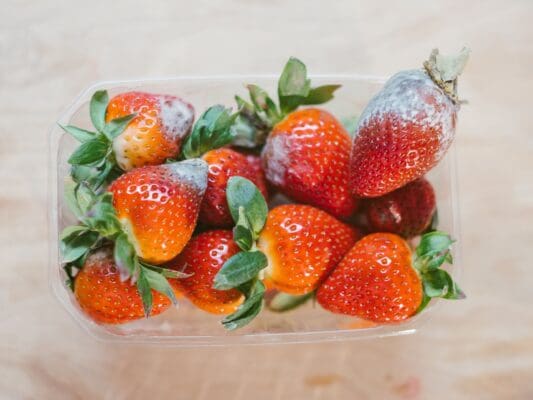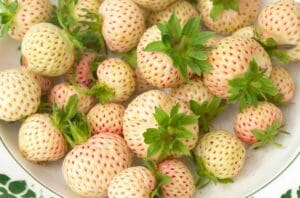Understanding Strawberry Seasonality 🍓
Strawberries are a quintessential spring and early summer fruit, celebrated for their vibrant red color, sweet-tart flavor, and juicy texture. While they’re available year-round in many grocery stores, their peak season typically runs from April to June in most regions. During this time, strawberries are at their freshest, sweetest, and most affordable. Outside of peak season, strawberries are often imported or grown in greenhouses, which can affect their flavor and texture. For the best experience, seek out locally grown strawberries during their natural growing season—they’re likely to be more flavorful, aromatic, and economical.
While there are hundreds of varieties, they all look similar and would be hard to distinguish. Vendors typically don’t advertise the type unless it’s a premium type, so consumers can rely on the information in this guide to pick the best ones if they are looking for the typical strawberries.
What to Look For 🔍
- Color: Look for strawberries that are uniformly bright red. Avoid berries with white or green patches near the stem, as these are underripe.
- Size: While size doesn’t always indicate quality, medium-sized strawberries tend to be sweeter and juicier than overly large ones.
- Texture: The berries should feel firm but not hard. A slight give when gently pressed is a good sign of ripeness.
- Aroma: Ripe strawberries have a sweet, fragrant smell. If they lack aroma, they may be underripe or bland.
- Stem and Leaves: Fresh strawberries will have bright green, perky stems and leaves. Wilted or dried stems are a sign of older berries.
- Packaging: If buying pre-packaged strawberries, check for moisture or mold at the bottom of the container, as this can indicate spoilage.

What to Avoid 🚫
- Strawberries with soft spots, bruises, or signs of mold.
- Berries that are overly mushy or have a dull, dark red color (this can indicate overripeness).
- Containers with juice pooling at the bottom, as this suggests the berries are crushed or damaged.
- Strawberries with no aroma or a sour smell.


Storage Tips
❄️ Keep berries fresh longer:
- Unwashed and Whole: Store strawberries in the refrigerator in their original container or a breathable container lined with paper towels to absorb excess moisture. They’ll stay fresh for 3–5 days.
- Washed and Cut: If you’ve already washed or cut the strawberries, store them in an airtight container in the fridge for 1–2 days.
- Freezing: For longer storage, freeze strawberries by washing, hulling, and placing them in a single layer on a baking sheet. Once frozen, transfer them to a freezer-safe bag or container. They’ll keep for up to 6 months and are perfect for smoothies or baking.
How to Prep Strawberries
- Wash: Rinse strawberries under cold water just before eating or using them. Avoid washing them too far in advance, as excess moisture can lead to spoilage.
- Remove the Leaves (Optional): The leafy tops of strawberries are edible, but many people prefer to remove them. Simply pinch the leaves with your fingers and pull them off—no knife needed!
How They’re Sold 🛒
- Fresh: Sold in pint or quart containers, often by weight.
- Pre-Washed and Pre-Cut: Some stores offer pre-washed and sliced strawberries for convenience, though these tend to have a shorter shelf life.
- Frozen: Available year-round in the freezer section, perfect for smoothies, baking, or sauces.
- Seasonality: Strawberries are at their peak in spring and early summer, though they’re available year-round in many regions. Supermarkets will typically have strawberries on sale due to the spike in supply in the summer season.
Why Strawberries? 🌟
- Nutrient-Rich: Packed with vitamin C, manganese, folate, and antioxidants like anthocyanins.
- Low in Calories: A guilt-free snack that’s naturally sweet and satisfying.
- Versatile: Perfect for eating fresh, adding to desserts, or incorporating into savory dishes like salads and salsas.
Ways to Use Strawberries 🍽️
- Eating Fresh: Enjoy them as a snack, dipped in chocolate, or paired with yogurt or whipped cream.
- Smoothies: Blend strawberries with bananas, milk, or your favorite smoothie base for a refreshing drink.
- Desserts: Use them in cakes, tarts, parfaits, or as a topping for ice cream.
- Jams and Preserves: Cook strawberries with sugar and lemon juice to make homemade jam.
- Salads: Toss sliced strawberries into green salads with spinach, goat cheese, and balsamic vinaigrette.
- Sauces: Puree strawberries to make a sweet sauce for pancakes, waffles, or cheesecake.
Specialty Strawberries 🌏
While most strawberries look and taste similar, there are some specialty varieties that stand out for their unique flavors, sizes, or growing methods. Here are a few notable ones:
- Japanese Strawberries: Japan is renowned for its premium strawberries, which are often larger, sweeter, and more aromatic than typical varieties. Popular types include the Amaou (known for its perfect balance of sweetness and acidity) and the Skyberry (prized for its juiciness and vibrant red color). These strawberries are often grown with meticulous care and are sometimes even gifted as luxury items.
- Pineberries: These unique strawberries are white with red seeds and have a flavor reminiscent of pineapple. They’re a fun and exotic option for those looking to try something different.
- Albion Strawberries: A popular everbearing variety, Albion strawberries are known for their firm texture, deep red color, and exceptional sweetness. They’re often grown in California and are a favorite for both fresh eating and desserts.
- Wild Strawberries: Smaller than cultivated strawberries, wild strawberries (or fraises des bois) are intensely fragrant and sweet. They’re often foraged or grown in small quantities and are considered a delicacy in gourmet cooking.


